Header
discover the five new Master Origin coffees
Coffees mastered by craftsmen,
inspired by the land
Shaped by both the conditions in which they ripen and the way that they are
harvested and processed, the five coffees that make up the new Master Origin
range, which replaces the Pure Origin range, refine their distinct personalities over
the course of a long process. It is time to meet them.





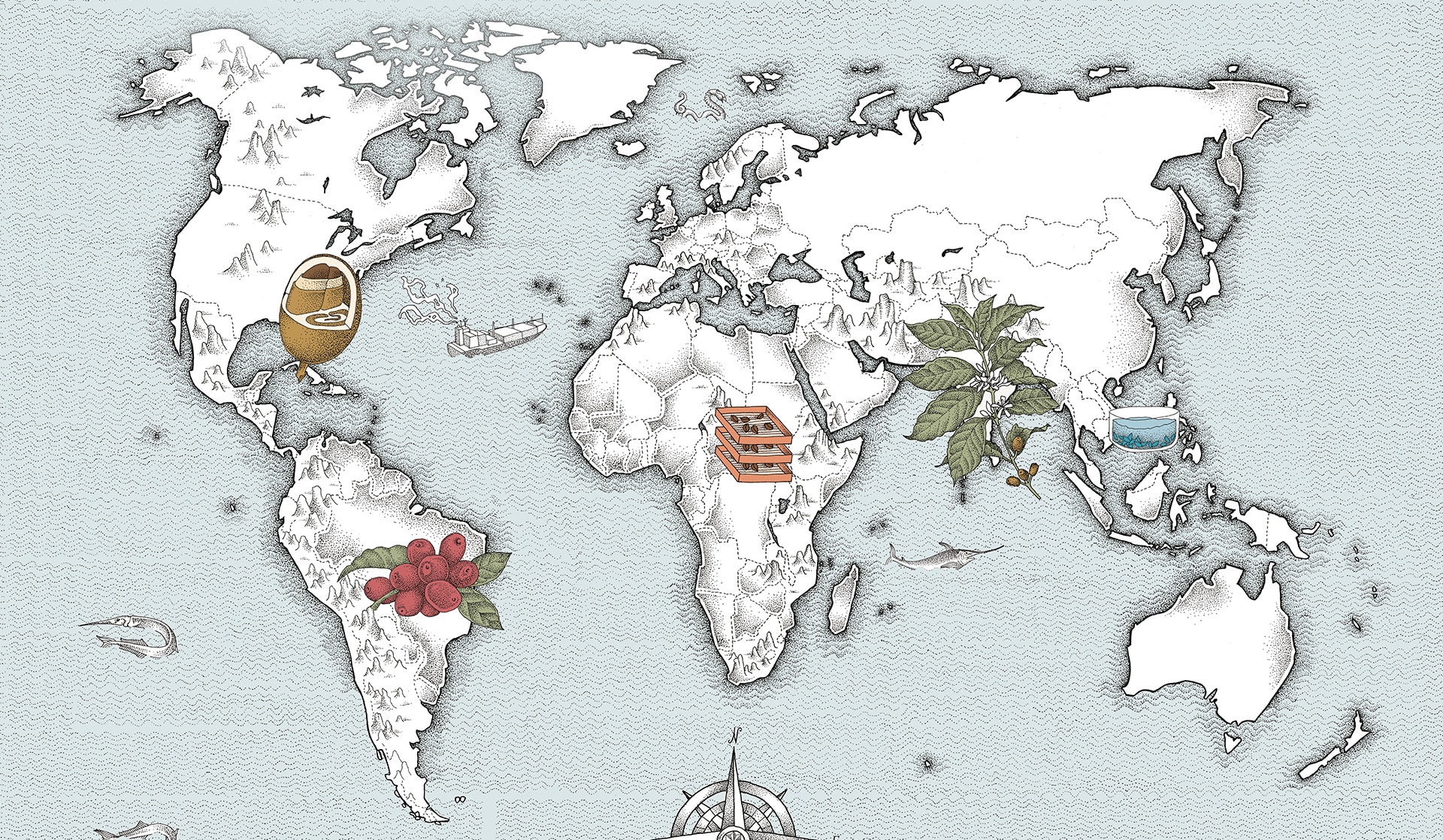

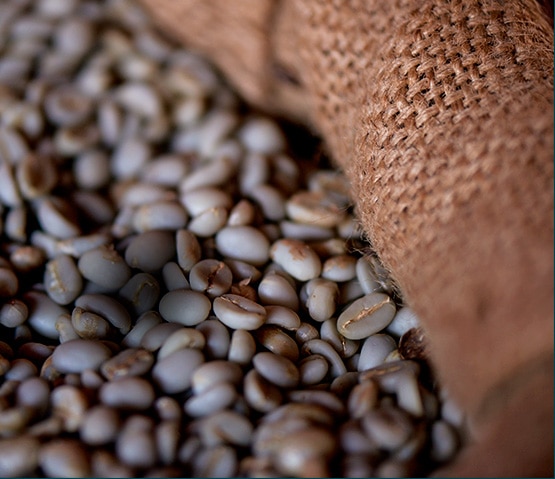
MASTER ORIGIN INDONESIA
UNIQUE WET HULLED TECHNIQUE
Most coffees owe much of their personality to the soil and climate in the regions they are grown, and this is all the more true for our Master Origin Indonesia. This is because of the very humid climate in Indonesia, and Aceh province in northern Sumatra in particular, which influences the production process. Carefully harvested by hand, the coffee beans are de-pulped and then soaked in water overnight to ferment. They are then washed and subjected to a unique treatment.


Recommended extraction:
Espresso (40 ml) or Lungo (110 ml)

MASTER ORIGIN NICARAGUA
HONEYED COFFEE
It is a unique process, known as “black honey”, which gives this 100% arabica from the high plains
of Nicaragua its full flavour.
Once the coffee berries are picked,
the farmers remove the fruit
without separating the coffee bean
from the sticky and sweet
substance that covers them:
the mucilage. The full berry is then
dried intact, which lets the plant’s
natural sugars infuse the core of
the bean. The process takes several
weeks, and the beans must be
tended to around the clock
the humid climate.
Nespresso experts are at hand
to help the farmers get the fullest
expression of Master Origin
Nicaragua’s qualities: a coffee with
the sweet taste of honey and
cereals, with notes of red berries,
which replaces the Pure Origin
Dulsão do Brasil.


Recommended extraction:
Espresso (40 ml) or Lungo (110 ml)

MASTER ORIGIN COLOMBIA
LATE HARVEST
When the coffee berry turns red, it means it is ripe, and this is usually when it is harvested. But this is not the case for Master Origin Colombia. Guided by Nespresso experts, farmers wait until the berry takes on an almost purplish colour before picking them by hand. This is a demanding technique: sometimes there’s only a few hours between a harvest that is late, and one that is too late. In the AAA Programme, Nespresso helps farmers in the Cauca and Nariño regions of southwest Colombia

Recommended extraction:
Espresso (40 ml) or Lungo (110 ml)
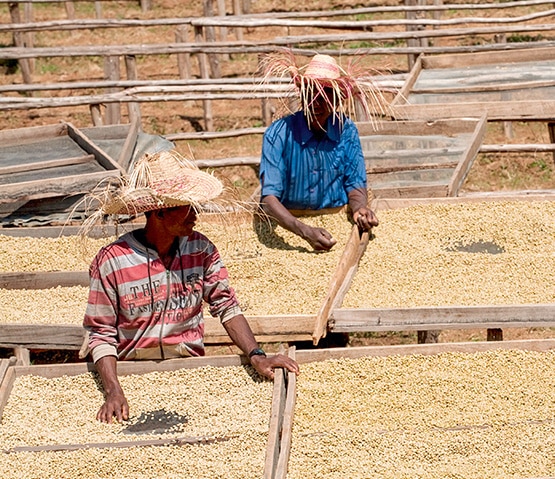
MASTER ORIGIN ETHIOPIA
DRY PROCESSED
In Ethiopia, water is scarce. Once ripe, the coffee growers gather the coffee berries and then spread them out on raised terraces to dry in the sun in a “natural” process. They are even covered at night to avoid any dampness. The growers carefully turn and rake the beans every hour for four weeks until they blacken in colour, showing that the drying is complete. They are then ground to extract the coffee bean, which will then be roasted.Thanks to this process,


Recommended extraction:
Espresso (40 ml) or Lungo (110 ml)
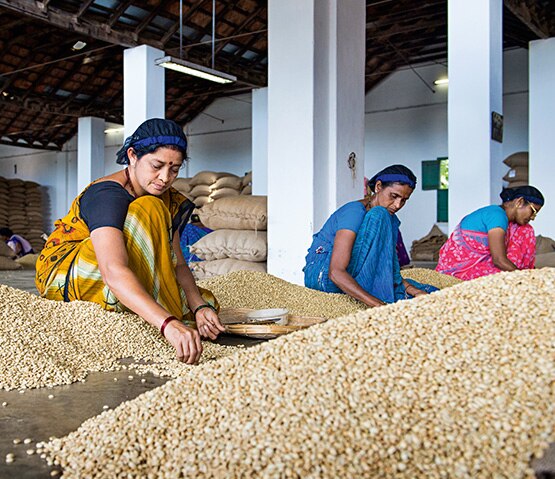
MASTER ORIGIN INDIA
AN ACCIDENT OF HISTORY
When coffee was first exported to Europe from India the valuable cargo was carried on ships, spending up to six months at sea. With the humidity, the beans swelled, and then dried and shrank in the sun. These changes, far from displeasing the Europeans, proved to be so popular that today they are artificially reproduced, without ever setting sail. The process is known as “Monsooning” and takes three months over June to September, when the weather phenomenon of the same name is

Recommended extraction:
Espresso (40 ml) or Lungo (110 ml)

MASTER ORIGIN INDONESIA
UNIQUE WET HULLED TECHNIQUE
Most coffees owe much of their personality to the soil and climate in the regions they are grown, and this is all the more true for our Master Origin Indonesia. This is because of the very humid climate in Indonesia, and Aceh province in northern Sumatra in particular, which influences the production process. Carefully harvested by hand, the coffee beans are de-pulped and then soaked in water overnight to ferment. They are then washed and subjected to a unique treatment.


Recommended extraction:
Espresso (40 ml) or Lungo (110 ml)

MASTER ORIGIN NICARAGUA
HONEYED COFFEE
It is a unique process, known as “black honey”, which gives this 100% arabica from the high plains
of Nicaragua its full flavour.
Once the coffee berries are picked,
the farmers remove the fruit
without separating the coffee bean
from the sticky and sweet
substance that covers them:
the mucilage. The full berry is then
dried intact, which lets the plant’s
natural sugars infuse the core of
the bean. The process takes several
weeks, and the beans must be
tended to around the clock
the humid climate.
Nespresso experts are at hand
to help the farmers get the fullest
expression of Master Origin
Nicaragua’s qualities: a coffee with
the sweet taste of honey and
cereals, with notes of red berries,
which replaces the Pure Origin
Dulsão do Brasil.


Recommended extraction:
Espresso (40 ml) or Lungo (110 ml)

MASTER ORIGIN COLOMBIA
LATE HARVEST
When the coffee berry turns red, it means it is ripe, and this is usually when it is harvested. But this is not the case for Master Origin Colombia. Guided by Nespresso experts, farmers wait until the berry takes on an almost purplish colour before picking them by hand. This is a demanding technique: sometimes there’s only a few hours between a harvest that is late, and one that is too late. In the AAA Programme, Nespresso helps farmers in the Cauca and Nariño regions of southwest Colombia

Recommended extraction:
Espresso (40 ml) or Lungo (110 ml)

MASTER ORIGIN ETHIOPIA
DRY PROCESSED
In Ethiopia, water is scarce. Once ripe, the coffee growers gather the coffee berries and then spread them out on raised terraces to dry in the sun in a “natural” process. They are even covered at night to avoid any dampness. The growers carefully turn and rake the beans every hour for four weeks until they blacken in colour, showing that the drying is complete. They are then ground to extract the coffee bean, which will then be roasted.Thanks to this process,


Recommended extraction:
Espresso (40 ml) or Lungo (110 ml)

MASTER ORIGIN INDIA
AN ACCIDENT OF HISTORY
When coffee was first exported to Europe from India the valuable cargo was carried on ships, spending up to six months at sea. With the humidity, the beans swelled, and then dried and shrank in the sun. These changes, far from displeasing the Europeans, proved to be so popular that today they are artificially reproduced, without ever setting sail. The process is known as “Monsooning” and takes three months over June to September, when the weather phenomenon of the same name is

Recommended extraction:
Espresso (40 ml) or Lungo (110 ml)

MASTER ORIGIN INDONESIA
UNIQUE WET HULLED TECHNIQUE
Most coffees owe much of their personality to the soil and climate in the regions they are grown, and this is all the more true for our Master Origin Indonesia. This is because of the very humid climate in Indonesia, and Aceh province in northern Sumatra in particular, which influences the production process. Carefully harvested by hand, the coffee beans are de-pulped and then soaked in water overnight to ferment. They are then washed and subjected to a unique treatment.


Recommended extraction:
Espresso (40 ml) or Lungo (110 ml)
MASTER ORIGIN NICARAGUA HONEYED COFFEE
The process takes several weeks, and the beans must be tended to around the clock to make sure they don’t rot in the humid climate. Nespresso experts are at hand to help the farmers get the fullest expression of Master Origin Nicaragua’s qualities: a coffee with the sweet taste of honey and cereals, with notes of red berries, which replaces the Pure Origin Dulsão do Brasil.

Recommended extraction:
Espresso (40 ml) or Lungo (110 ml)
MASTER ORIGIN COLOMBIA LATE HARVEST
Most of them cultivate less than two hectares of land, and the improvements made to their farming techniques help them produce more and, as a result, improve their quality of life. Furthermore, this expertise is what gives the Master Origin Colombia its notes of red berries that are reminiscent of certain wines. Recommended for those who loved Pure Origin Rosabaya de Colombia.

Recommended extraction:
Espresso (40 ml) or Lungo (110 ml)
MASTER ORIGIN ETHIOPIA DRY PROCESSED
Thanks to this process, Master Origin Ethiopia retains a somewhat dry flavor with delicate floral aromas and unexpected notes of musk, reminiscent of the Pure Origin Bukeela ka Ethiopia, which it replaces. Since 2015, Nespresso has been supporting farmers in western Ethiopia, helping them to adopt better farming practices and thereby increasing their harvest.

Recommended extraction:
Espresso (40 ml) or Lungo (110 ml)
MASTER ORIGIN INDIA AN ACCIDENT OF HISTORY

Recommended extraction:
Espresso (40 ml) or Lungo (110 ml)
MASTER ORIGIN INDONESIA UNIQUE WET HULLED TECHNIQUE
The coffee beans, with their husks, are dried and shelled using a special machine that maintains 40% humidity. The drying is finished outdoors where humidity is at around 10-12%, and is essential to the beans’ longevity. It is this process, the result of ancient expertise, which gives our 100% Fair Trade arabica its smooth texture, inimitable blueish colour, and its delicious notes of tobacco leaves and living wood.

Recommended extraction:
Espresso (40 ml) or Lungo (110 ml)

of their craft
reflecting the very definition of sustainability by
valuing every aspect of our environment. This
philosophy is central to the production of each of
the five new Nespresso Master Origin coffees. People
form the heart of this expertise that can also be
found locally, in Belgium and Luxembourg.
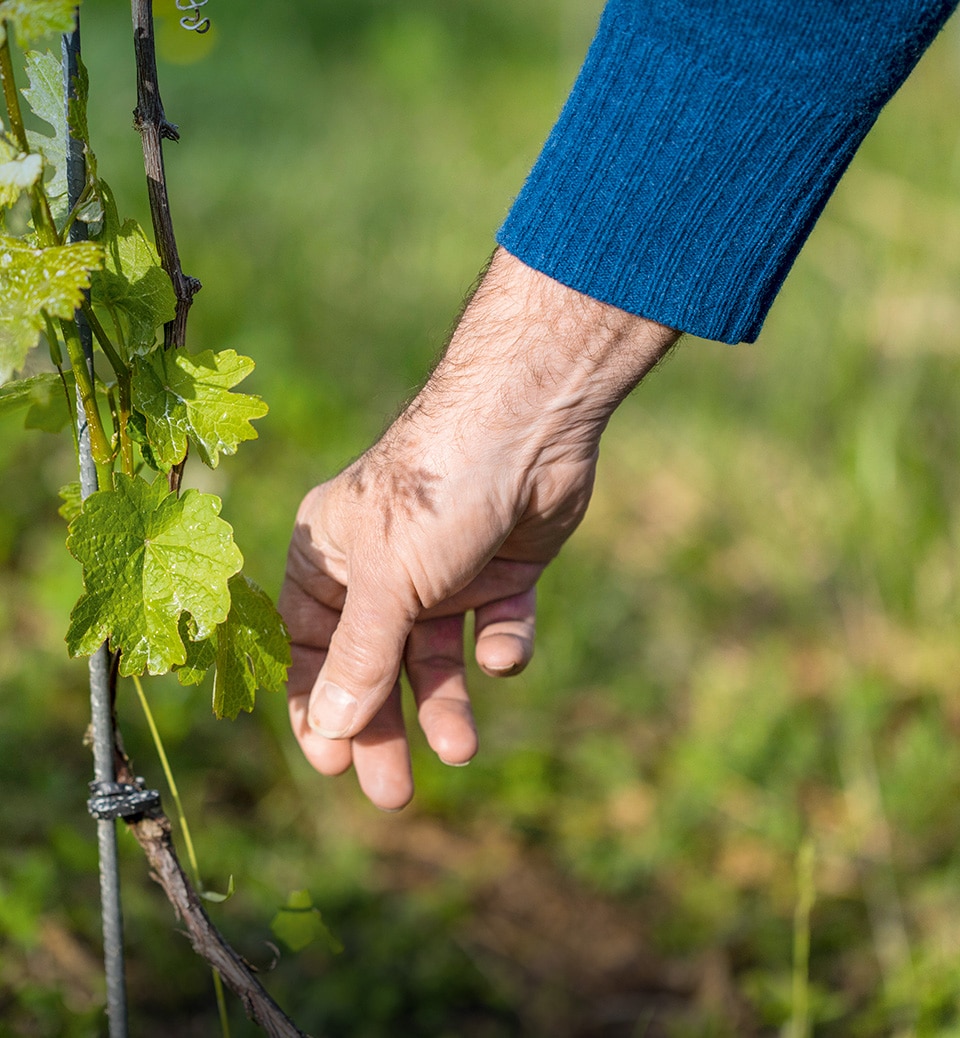

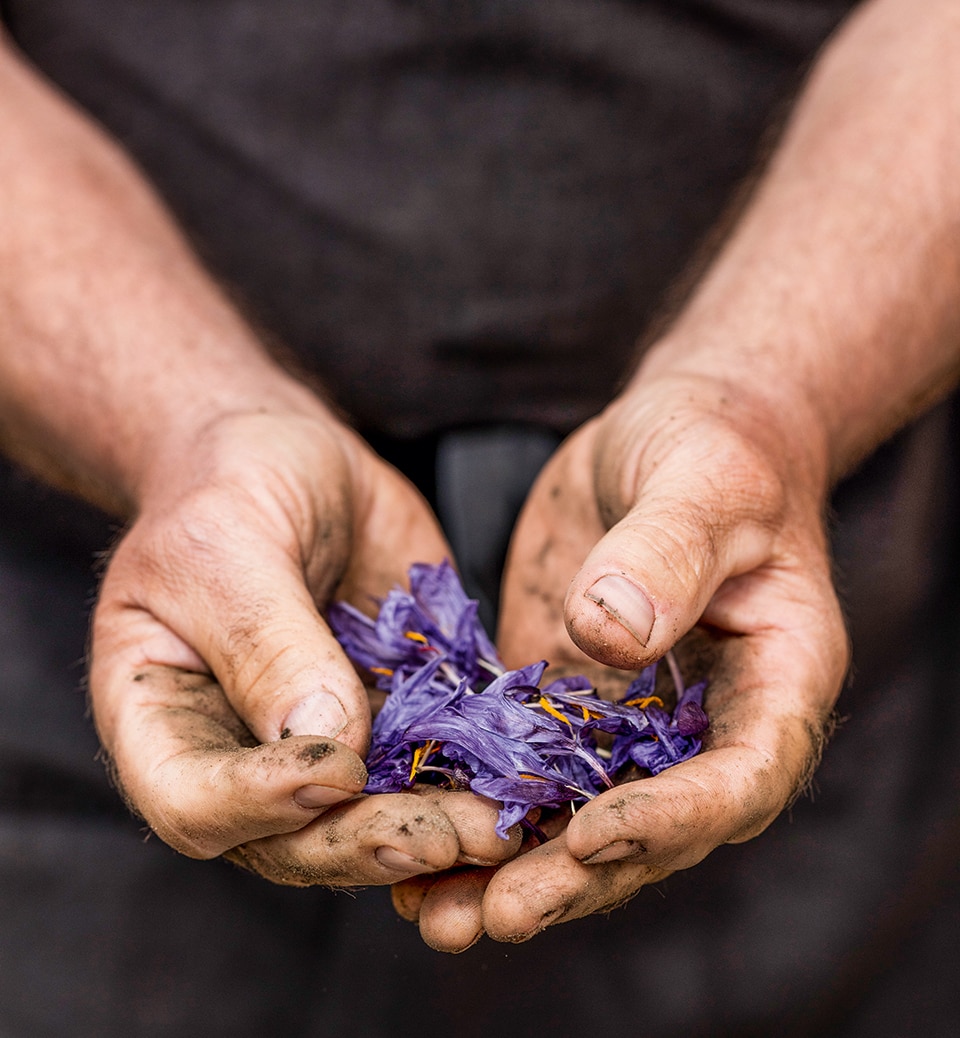
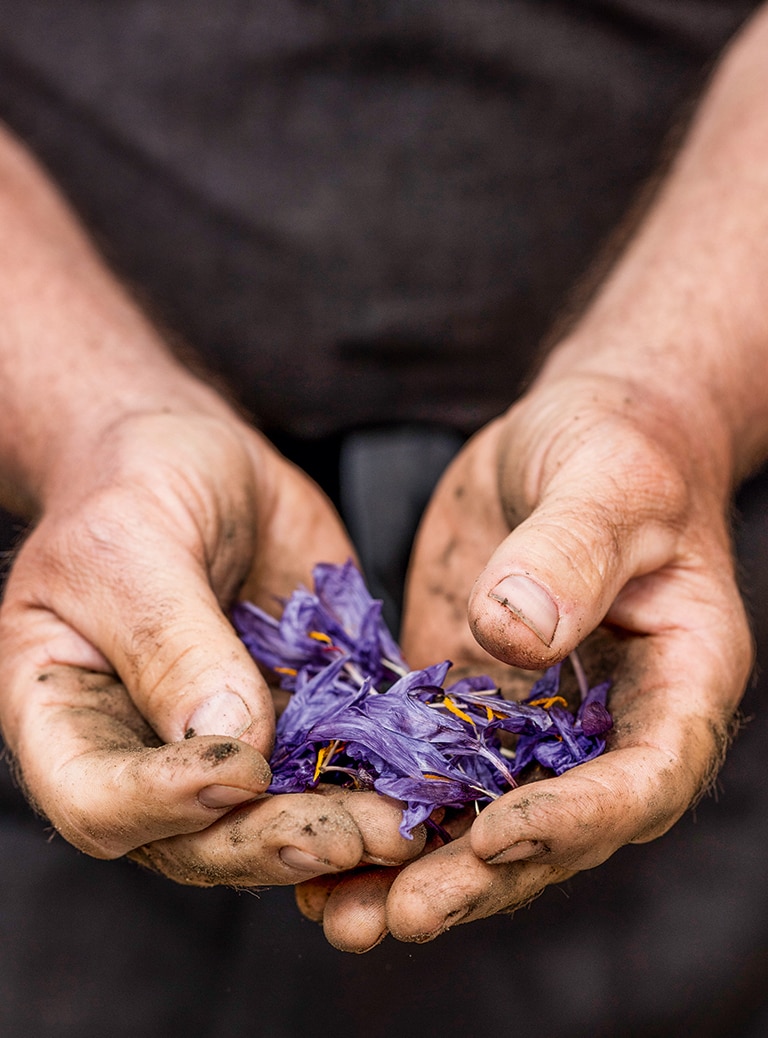
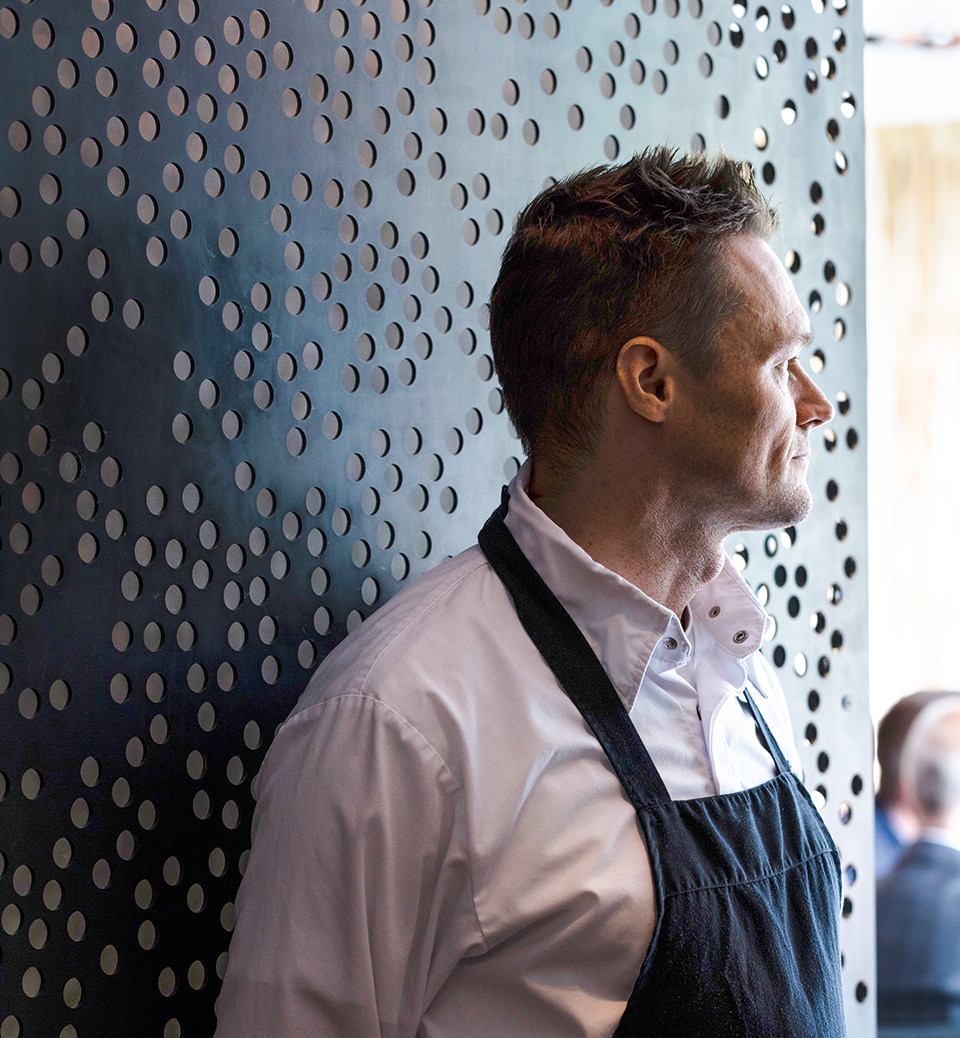

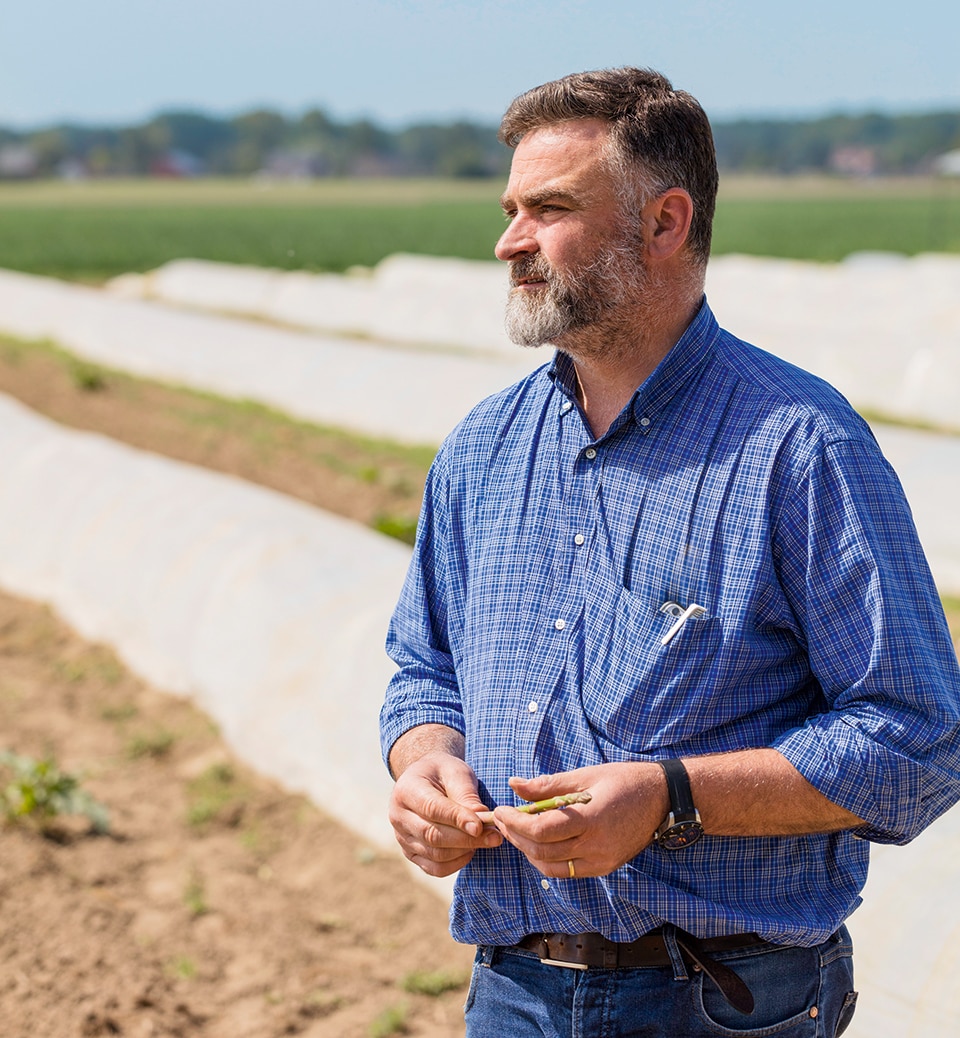
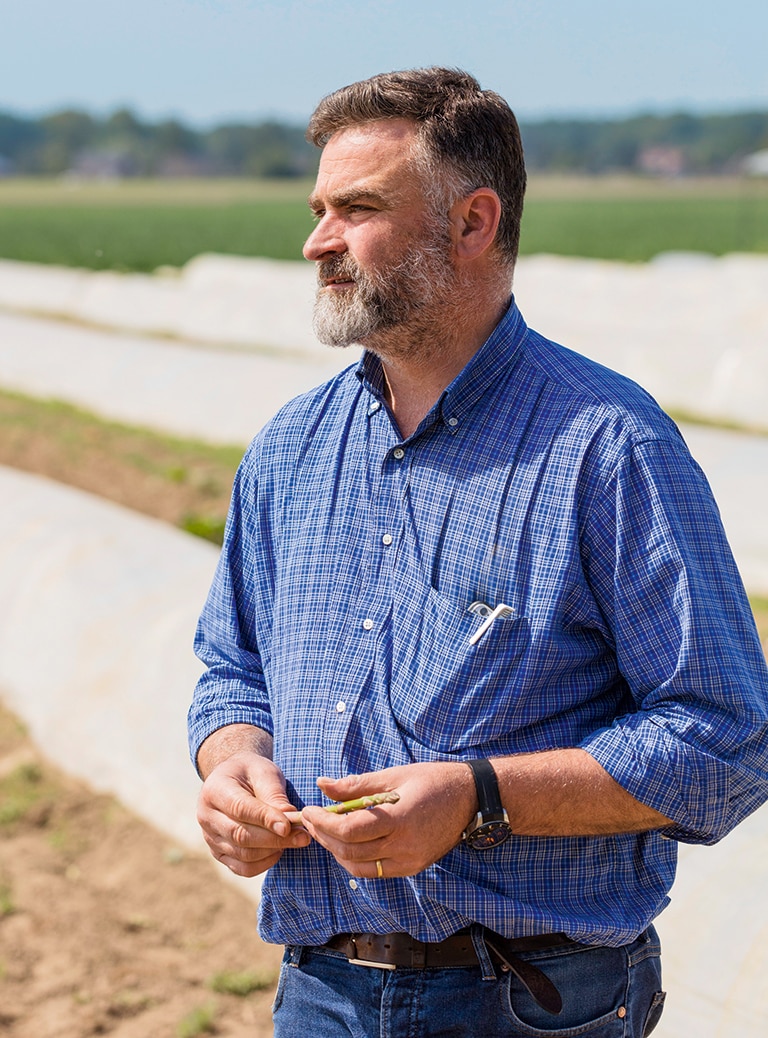
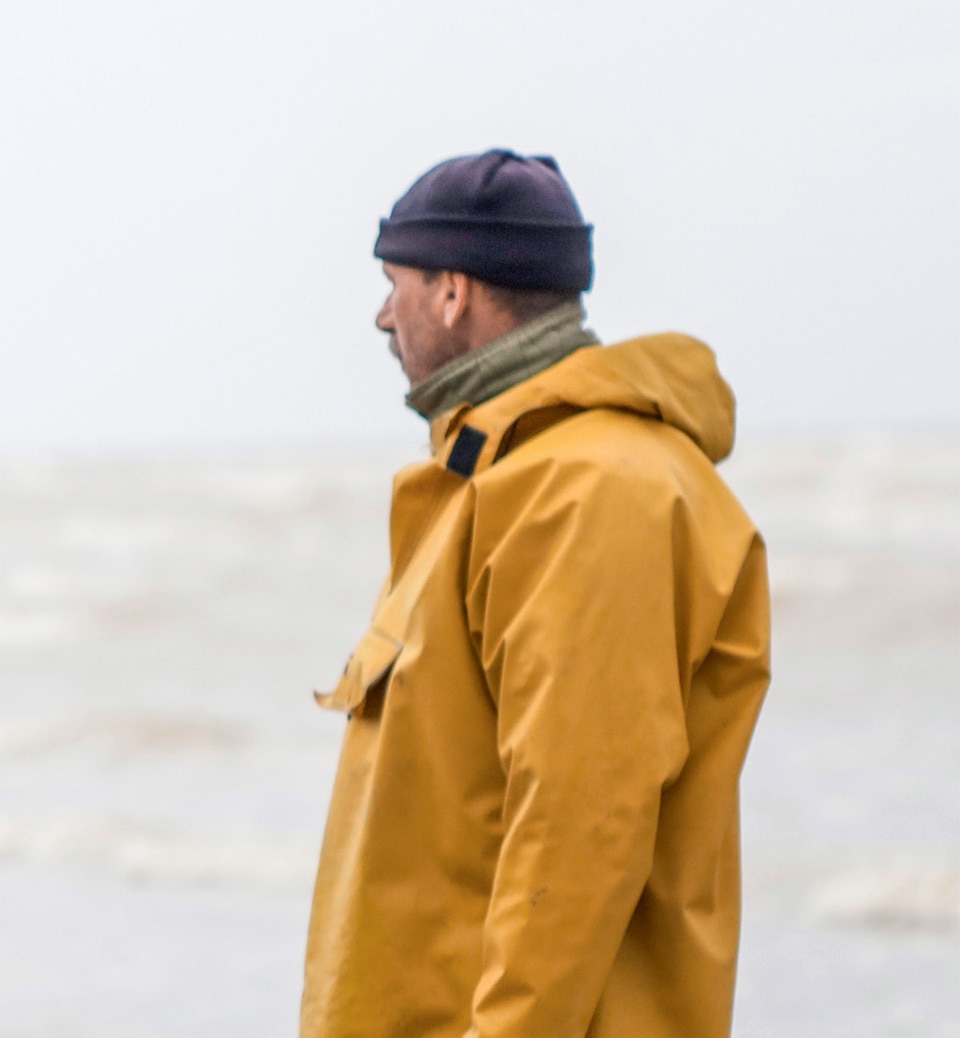

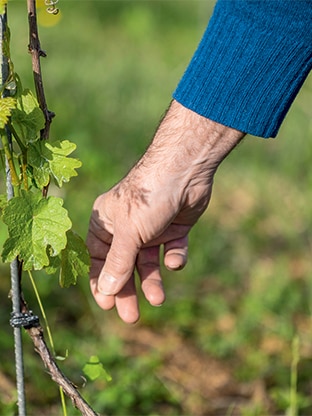
The magician of Moselle

Leloup-Van den Bulck

starfish
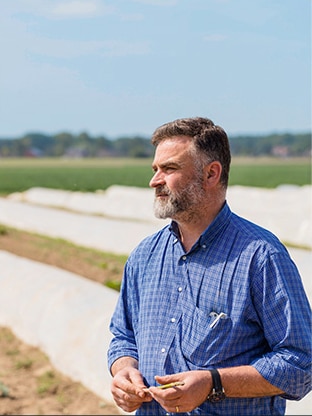
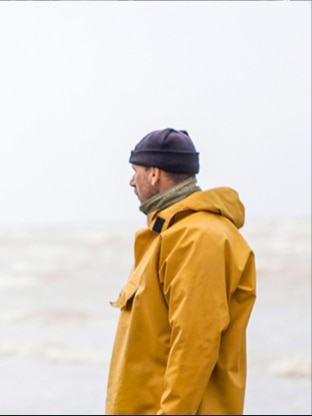
Luxembourg. And to introduce them to you, “What
Else?” met the market gardener Stéphane Longlune,
the shrimp fisherman Johan Vanmassenhove, the
winemaker Abi Duhr, the Michelin-starred chef Filip
Claeys, and Linda and Marc Leloup-Van den Bulck, a
couple who grow saffron. They all share a respect
for the land and a taste for the authentic.

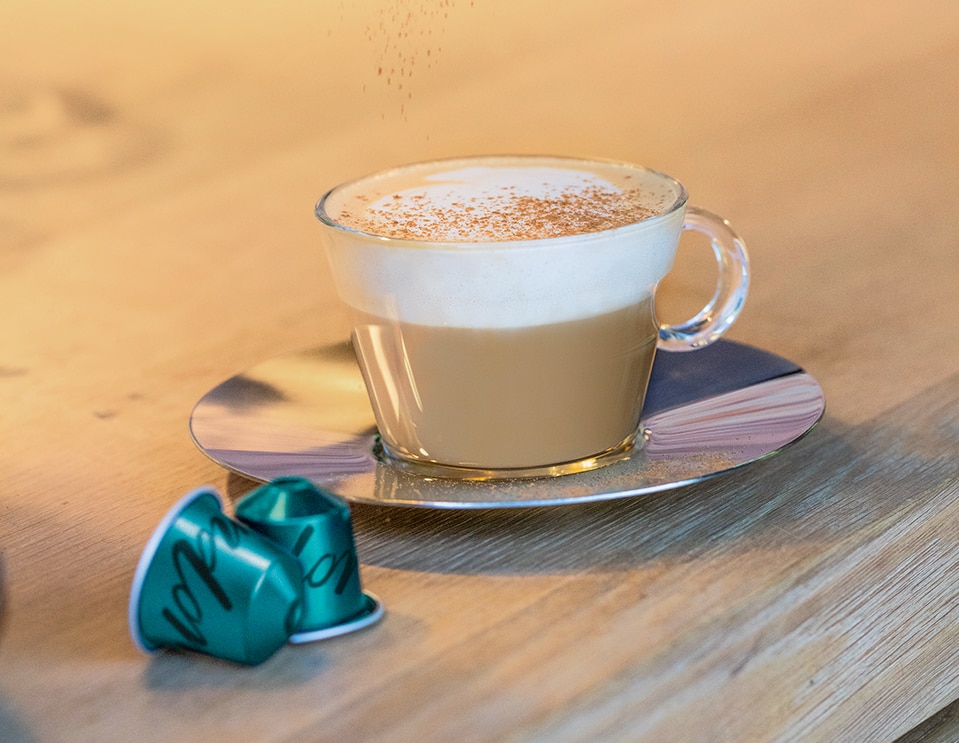
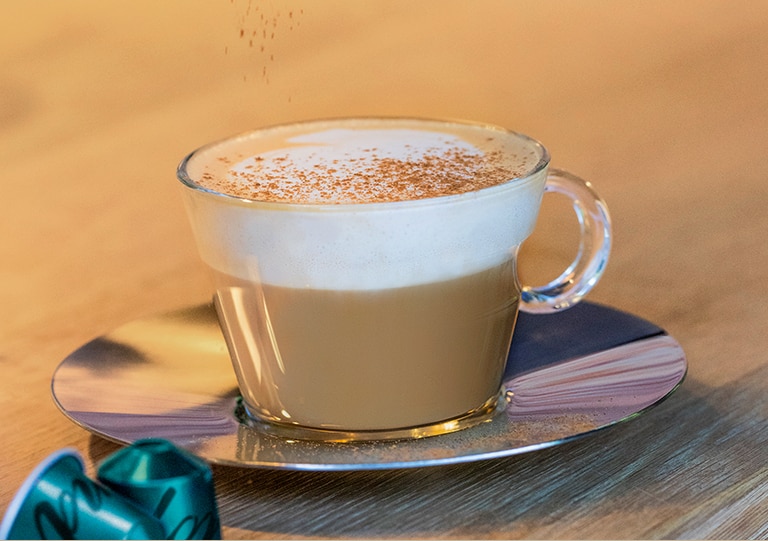

seasonal, easy-to-make recipe that reveals the fullest
expression of our new Master Origin Indonesia whilst
drawing on inspiration from Canada.
of Master Origin
Indonesia (40 ml) •
100ml whole milk • 1
dash of maple syrup •
1 pinch of powdered
cinnamon.



dedicated to coffee: a first in Belgium. Coming soon
to Antwerp and Liège.


favourite coffee?
the best spots to drink a cup of coffee with unique origins.
Wood-fired and free range, the roast
chicken from Poule & Poulette (Gand)
is sure to delight kids and adults
alike, as is the typically Belgian menu
at Nemrod (Knokke-Heist). And for a
cultural family outing with plenty of
pep, head to Bruges and the Monsieur
Ernest Hotel.
On the terrace of the Antwerp
institution, Matterhorn, overlooking
the sea at Hotel Rewind in
Oostduinkerke, or at Saga Café in
Liège, there’s nothing better than a
coffee with friends to round off a
sunny lunch or marathon shopping
session.
Fashion victims can head straight to
Verso Café (Antwerp), one of the
smartest in the fashion capital. Just
as elegant is The Hotel, whose
unbeatable views of Brussels will
leave you in seventh heaven, and
there’s no need to come back down to
earth at La Villa in the Sky (Brussels),
where the twice Michelin-starred
Alexandre Dionisio ushers you through
the gates of heaven.
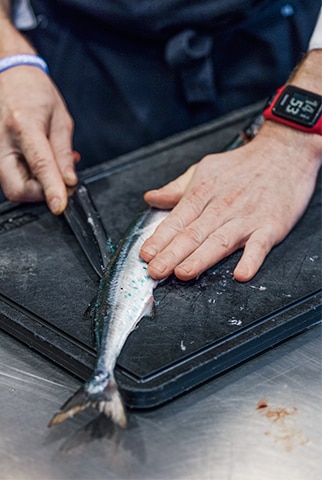
> De Jonkman,
Maalse Steenweg 438 8310 Bruges
www.dejonkman.be
Closed Sundays, Mondays, and Tuesdays
HE RESTS HIS HAND ON A FISH TWICE AS LONG BUT ALMOST AS THIN AS HIS KNIFE.
“We only work with fish from the North Sea, depending on what the fishermen bring in that day, and we pay a fair price. We adapt to them. It
> De Jonkman,
Maalse Steenweg 438 8310 Bruges
www.dejonkman.be
Closed Sundays, Mondays, and Tuesdays
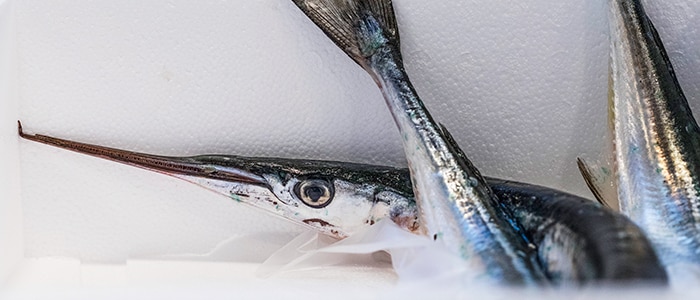
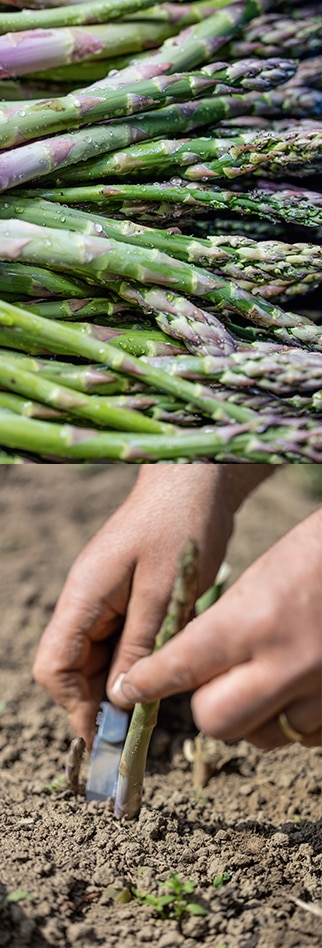
HE NEVER LISTENS TO ANYONE. AND IT IS ALL THE BETTER.
> Rue du Grand Caillou, 7050 Jurbise


LUXEMBOURG, ON THE LEFT BANK OF THE MOSELLE, OVERLOOKING GERMANY FROM GREVENMACHER.
> 73, route de Trèves, 6793 Grevenmacher, Luxembourg
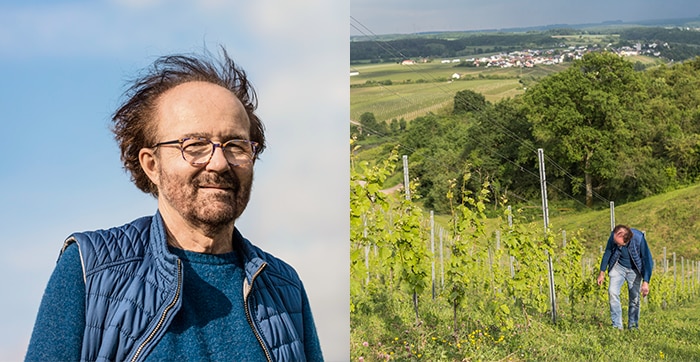

AN ESSENTIAL INGREDIENT IN RICE PUDDING, THE PILLAR OF BELGIAN CUISINE THAT THE PAINTER, BRUEGEL THE ELDER, MADE CENTRAL TO HIS PEASANT WEDDING,
“We just take out the red bit, the bit that contains the flavour. The orange base of the stamen is often left in low quality saffron. It’s got no flavour, but it adds weight...” At €35/g, you can understand why people would cheat. But for Linda and Marc, standards have always been more important than financial considerations. They developed their own cultivation techniques, similar to biodynamics, which help the soil’s micro-organisms to develop perfectly. Respect for ecosystems, no pesticides:
> Leefdaalstraat 14, 2200 Morkhoven (farm tours by appointment)

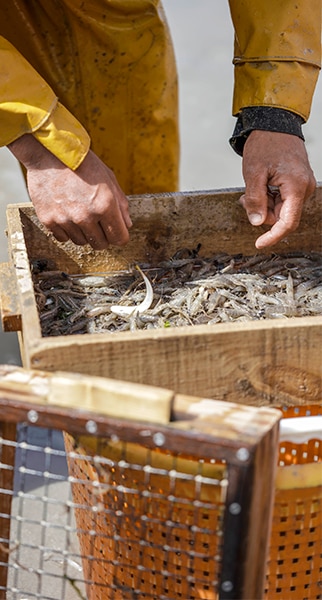
YOU CAN SEE THEM COMING IN THE DISTANCE, ALONG THE AVENUE THAT LEADS TO THE BEACH.
> Digue de Coxyde, 8670

THE LAST RAYS OF THE EVENING SUN WARM THE LAWNS AROUND FORT 4 IN MORTSEL.
THE TOM COOLS TASTING NOTES “With its notes of tobacco leaves and young wood, my recipe accentuates its complexity with maple syrup. The density of Master Origin Indonesia in the cup and its rich aromas guarantee the perfect balance. And the final touch of sweetness through cinnamon completes the picture, for a deliciously decadent ensemble. With a Nespresso Creatista, my favourite coffee machine, it couldn’t be easier to make it at home.”
ARTISANS ARE CREATORS AS WELL AS GUARDIANS.
The late harvest that brings out the vibrant red berry flavours of the Master Origin Colombia, the natural drying process that distils the floral aromas of the Master Origin Ethiopia, the wet shelling that enhances the pleasant flavours of the Master Origin Indonesia, the Monsooning that uncovers the spiced woodiness of the Master Origin India, and the “black honey” process that gives the Master Origin Nicaragua its honeyed, cereal notes; people are behind all of these expert techniques. And they are also what this new issue of What Else? is all about. Close to our hearts, they find resonance with other activities, other crafts: the last of the North Sea shrimp fishermen, safron finding its way back to our fields, Filip Claeys’ efforts as a chef to protect marine life, the amazing asparagus from Stephane Longlune’s visionary market garden, or the uncompromising wines from Moselle Abi Duhr... These are just a few examples of a Belgian-Luxembourgish lifestyle that is still very much alive, combining elegance and gourmet cuisine.
